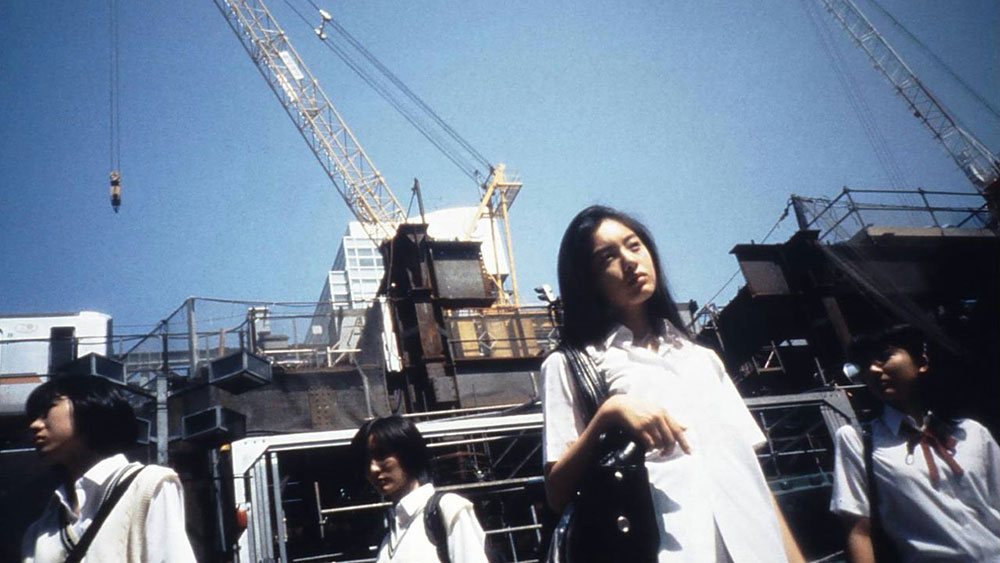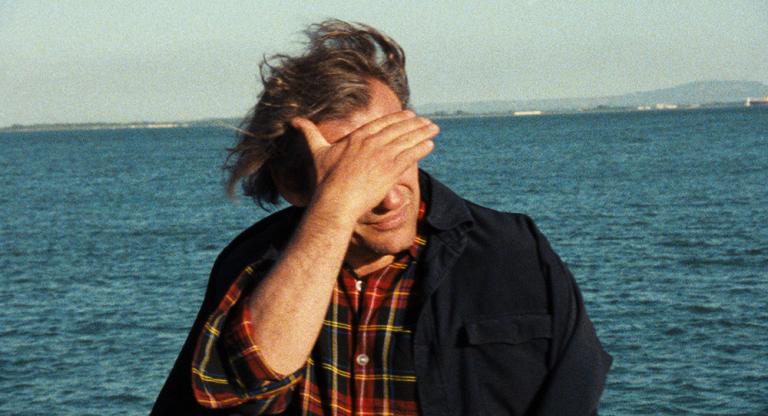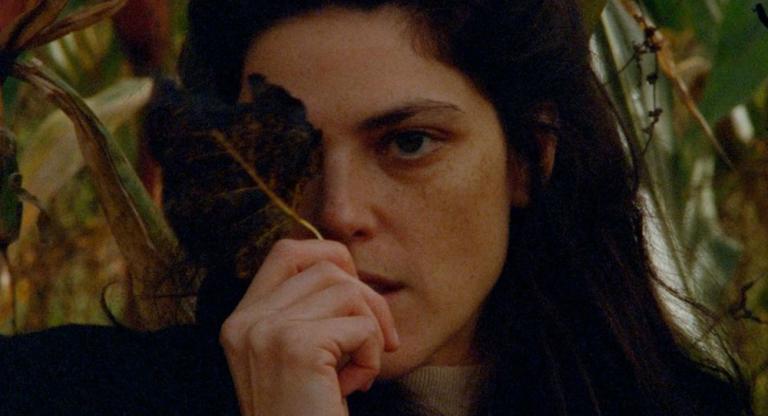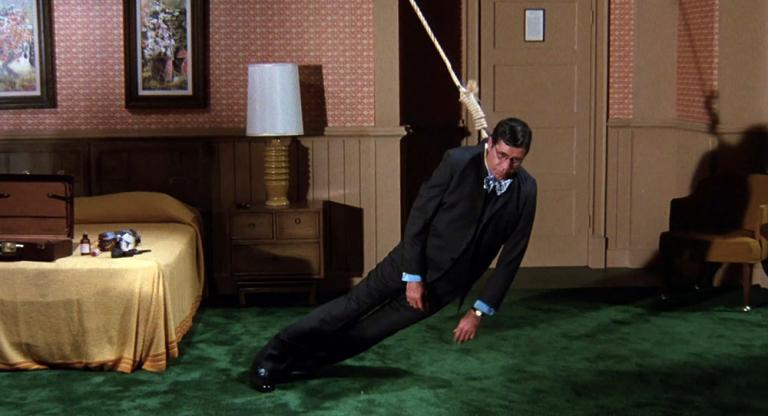In Hideaki Anno’s live-action feature debut Love & Pop (1998), a high school girl named Hiromi (Asumi Miwa) spots a topaz ring at a Shibuya mall while shopping with her three best friends on a July day in 1997. The ring looks up at Hiromi from its own point-of-view, illuminating her young face with its glowy, crystalline gaze. Reflected in the jewel, Hiromi is transfixed. “My heart is pounding… pounding, my heart,” she says in voice-over, comparing the sensation of wearing the ring to “closing your eyes for your first kiss” and “seeing your boyfriend naked for the first time.” In order to pay for the ring, which carries a ¥128,000 price tag, Hiromi and her friends embark on a sugar dating spree, keeping older men company for money. Growing desperate to claim the enchanting piece of jewelry before the mall closes at 9 p.m., Hiromi uses a borrowed flip phone to book meet-ups with guys through a teledating hotline called the Neruton Center “Pretty Club.” The cool optimism with which Hiromi approaches the dates is soon shaken, as the men she encounters take things far beyond the circumstances she agreed upon.
Anything can have a POV in Love & Pop: bicycle wheels, plates of food coming out of the microwave, karaoke TVs, and bathing suits in trendy stores. The creative use of POV is just one experimental technique Anno splashes across his radical coming-of-age film, which was shot primarily with hand-held digicams around Shibuya. Anno, who created the celebrated anime Neon Genesis Evangelion (1995 - 1996), mixes a barrage of unconventional camera angles in Love & Pop. Throughout, the film makes use of distorted lenses, layers of overlaid images, transitions from widescreen to full-screen, and, at times, quick, manic editing. The result is something utterly breathless, fluttering from exuberant to devastating to giggly in both form and tone.
Looming behind the film, which is an adaptation of Ryū Murakami’s novel Topaz II (1996), is the political and social character of Japan’s so-called “Lost Decade”—the period immediately following the bursting of the country’s asset bubble in 1990 and subsequent financial crisis. Families that had gained stability during the prosperous 1980s saw significant financial decline during the 1990s, while Japan’s business class continued to hoard wealth and live lavishly. The Lost Decade was a time of economic and spiritual depression in Japan, when many people, particularly the country’s youth, were left to covet life’s luxuries or attempt to obtain them, no matter the personal cost. In 1998, Japan’s age of consent was 13 years old and its prostitution laws were extremely hairy, giving rise to a rampant sex industry that flourished around non-coital sexual services and outings that involved women keeping men company in various ways. Sugar dating, or enjo kōsai (sometimes, simply known as ēnko), began to flourish in the 1990s via teledating hotlines. This resulted from girls becoming increasingly connected via the internet and cell phones, while finding it more and more difficult to satisfy their material desires within a recessive economy. The depictions of grown men soliciting girls in high school uniforms in Love & Pop is utterly shocking, but was basically legal. (It wasn’t until 1999 that Japan passed stronger legislation against the solicitation of children.) This representation of ēnko in the film is brutal to watch, but Anno’s unblinking look at teenage life in Japan in the late ‘90s is also what makes Love & Pop so uncompromisingly special. Despite the myriad POVs throughout the film, it’s ultimately Hiromi’s that holds it all together, and hers is often focused on her friends. “The four of us aren’t friends because we talk about everything,” she says, unpacking the unsentimental reality of teenage girl friendship. “We’re friends ‘cause we don’t ask questions we don’t want to answer or keep quiet when others expect an answer.”
Love & Pop screens this evening, February 23, and throughout the week, at IFC.



